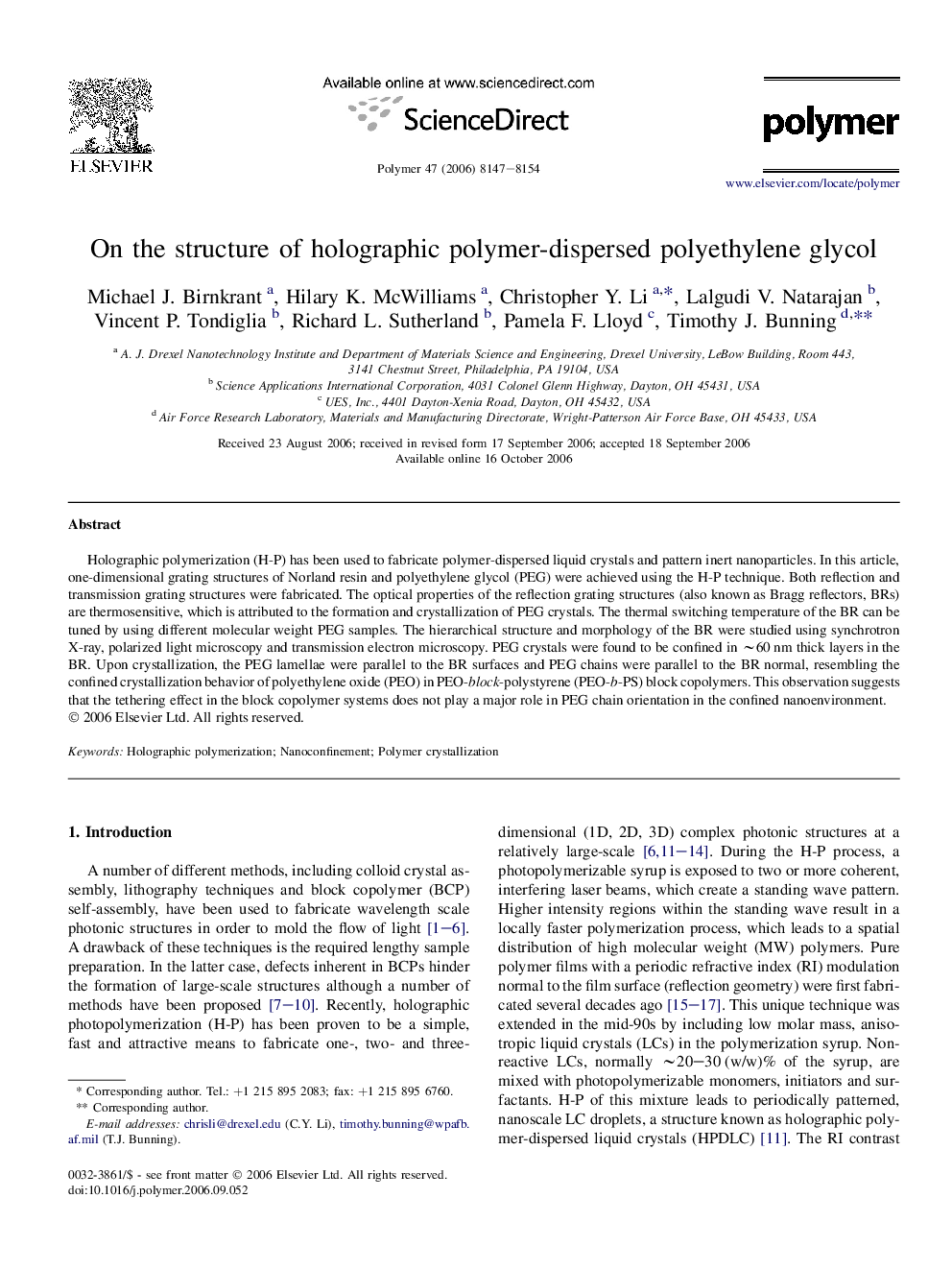| Article ID | Journal | Published Year | Pages | File Type |
|---|---|---|---|---|
| 5188556 | Polymer | 2006 | 8 Pages |
Abstract
Holographic polymerization (H-P) has been used to fabricate polymer-dispersed liquid crystals and pattern inert nanoparticles. In this article, one-dimensional grating structures of Norland resin and polyethylene glycol (PEG) were achieved using the H-P technique. Both reflection and transmission grating structures were fabricated. The optical properties of the reflection grating structures (also known as Bragg reflectors, BRs) are thermosensitive, which is attributed to the formation and crystallization of PEG crystals. The thermal switching temperature of the BR can be tuned by using different molecular weight PEG samples. The hierarchical structure and morphology of the BR were studied using synchrotron X-ray, polarized light microscopy and transmission electron microscopy. PEG crystals were found to be confined in â¼60Â nm thick layers in the BR. Upon crystallization, the PEG lamellae were parallel to the BR surfaces and PEG chains were parallel to the BR normal, resembling the confined crystallization behavior of polyethylene oxide (PEO) in PEO-block-polystyrene (PEO-b-PS) block copolymers. This observation suggests that the tethering effect in the block copolymer systems does not play a major role in PEG chain orientation in the confined nanoenvironment.
Related Topics
Physical Sciences and Engineering
Chemistry
Organic Chemistry
Authors
Michael J. Birnkrant, Hilary K. McWilliams, Christopher Y. Li, Lalgudi V. Natarajan, Vincent P. Tondiglia, Richard L. Sutherland, Pamela F. Lloyd, Timothy J. Bunning,
